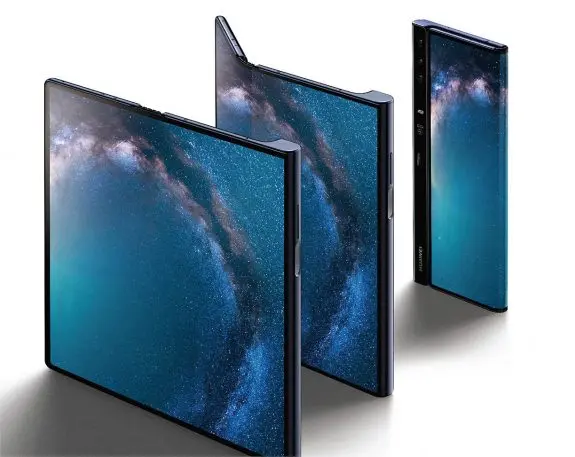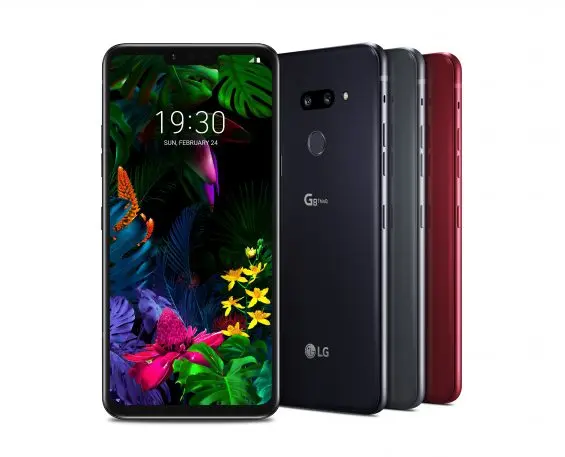The annual Mobile World Congress trade show in Barcelona is supposed to be Android’s time to shine, with phone makers from around the world introducing concepts that could make an iPhone owner jealous.
Last year’s show was an embarrassing exception. In lieu of fresh ideas, most manufacturers simply showed up with cheap imitations of Apple’s trendsetting iPhone X. They added unsightly camera notches to the top of their phones, but retained the bottom bezel, or “chin,” that Apple was able to eliminate. They tried their hands at face recognition, but without the fidelity and security of Apple’s Face ID. They continued to remove headphone jacks, but neglected to offer wireless alternatives with the same easy pairing as Apple’s AirPods.
In 2019, Android phone makers are back in the business of pushing the industry forward, both with wild new ideas (such as foldable phones) and more practical endeavors (such as more sophisticated camera systems). Don’t be surprised if some of these concepts show up in future iPhones.

The foldable 5G future
Part of me feels bewildered by Samsung’s and Huawei’s plans to release phones with foldable screens this year. The technology clearly isn’t ready, with visible creases in the display while unfolded and a much thicker design than conventional phones while folded. With Samsung’s Galaxy Fold launching for $1,980 on April 26, and Huawei’s Mate X arriving in mid-2019 for €2,299 (about $2,600), early adopters will essentially be purchasing expensive prototypes.
https://www.youtube.com/watch?v=7r_UgNcJtzQ
At the same time, giving enthusiasts access to bleeding-edge technology is part of what makes Android great. It also serves a practical purpose: Getting foldable phones out the door now allows app developers to start accommodating the tech early, so that their software will be ready when the hardware becomes more practical.
The same argument might also apply to 5G phones, which are coming from the likes of Samsung, LG, Huawei, Xiaomi, and ZTE. It’s still early days for the standard, and the high price and extra bulk of 5G phones should discourage most people from buying one this year. But once they exist, developers can start working in earnest on stuff that leverages 5G’s power, such as low-latency game streaming. Apple may be wise to sit 5G out this year, but it will benefit from other companies jumping in early.

Goodbye notch, hello punch
Aesthetically, it’s hard to say whether the “hole punch” camera cutout on phones such as Samsung’s Galaxy S10 (technically announced just before Mobile World Congress) is an improvement over the iPhone X’s notch. In both cases, you’re sacrificing design symmetry and a perfectly rectangular display for the ability to have more screen overall.
Conceptually, though, the hole punch makes more sense for any self-respecting Android phone maker. No Android phones offers a true equivalent to Face ID, which uses an array of sensors to map the user’s face, so they don’t need a wide, swooping display cutout to house their front-facing cameras. While Apple wasn’t the first phone maker to include a notch, it quickly took ownership of the concept with the iPhone X. The hole punch is a concept that Android phone makers can own for themselves.
New camera tech
Although iPhones have often gotten credit over the years for having the best smartphone camera, some of their advancements–such as optical image stabilization and multiple lenses–have shown up in Android phones first.
At Mobile World Congress, Nokia (or, more accurately, HMD, which makes phones under the brand) kept the trend alive with the Nokia 9 PureView, which has five camera lenses on its backside. Each 12-megapixel shooter captures a different exposure level, and the phone stitches together the ideal picture. (The “PureView” name is a nod to the camera-centric Windows Phones that Nokia put out between 2012 and 2015.)
Oppo, meanwhile, has figured out how to cram a 10X optical zoom camera into its forthcoming phones, giving them far more zoom range than garden-variety models. The company says it’s using three periscopic lenses arranged perpendicularly to the phone’s backside, along with a prism to reflect incoming light in the right direction. The entire module is only 0.28 inches thick, and therefore won’t add too much bulk to a phone. Oppo says this system will be part of a still-unannounced phone that will launch in the second quarter.

New ways to authenticate
While Apple’s Face ID still has no equivalent in the Android world, phone makers have been coming up with other clever ways to unlock a phone.
LG’s G8, for instance, includes an infrared-based camera system called Hand ID that measures the veins in a user’s outstretched hand for authentication. The same system also allows for air gestures such as pinching and swiping to launch apps, or twisting to control volume. The phone still has a fingerprint reader on its backside, but Hand ID could come in (ahem) handy when the phone is lying flat on a table.
Speaking of fingerprints, in-display fingerprint readers have recently started shipping after showing up as tech demos at last year’s Mobile World Congress. Huawei’s Mate 20 Pro and OnePlus’s 6T were first out of the gate late last year, and Samsung’s Galaxy S10 now includes the tech as well. Xiaomi, Oppo, and Vivo are also working on improved in-display sensors that work across a larger surface area.
More good stuff
Beyond all those whiz-bang ideas, phone makers are finding other ways to make their products stand out.
Sony is betting on taller, narrower phones with the Xperia 1, whose 6.5-inch display has a 21:9 aspect ratio. It’s not a crazy idea, given that phones have been steadily stretching ever since Apple introduced the original 3:2 aspect ratio iPhone in 2007. Meanwhile, Energizer is slapping its name on a phone from French telecom Avenir with an 18,000 mAh battery, measuring 0.7 inches thick and promising 48 hours of video playback on a charge.
It’s also encouraging to see Samsung and LG retain the headphone jack on their flagship Galaxy S10 and G8 ThinQ phones, even as their fellow Android phone makers followed Apple’s lead in stripping out the beloved audio port. (LG even plays up its headphone jack support by including a 32-bit digital-to-analog converter.) Rumors do suggest that Samsung will drop the headphone jack starting with the Galaxy Note 10 later this year, but at least the company now has an answer to Apple’s AirPods at the ready with its new Galaxy Buds, which offers a similar quick pairing process that most other wireless buds lack.
Android bounces back
To explain the lackluster showing at last year’s Mobile World Congress, I theorized that Apple had caught up with all the low-hanging fruit that other phone makers had used to stand out in previous years, such as larger screens, smaller bezels, and faster connectivity. At the same time, the areas where Apple jumped ahead–such as Face ID and dead-simple wireless earbuds–were a lot harder for other companies to replicate. As a result, Android phone makers were left flailing for new ideas.
This year, they’ve received several gifts in the form of emerging technology, such as 5G wireless and foldable displays. But Android phone makers are also taking some new risks and innovating on their own. Oppo’s optical zoom camera, for instance, could be a genuine leap forward for smartphone photography, and in-screen fingerprint readers could be a great alternative to face recognition. And whether you love or hate hole punch screens, they’re clearly a bold design choice.
Some of these innovations will surely work better than others, but that’s the point: Between their early embrace of new technology and their willingness to experiment, Android phone makers have a unique way of pushing smartphones forward. It’s nice to see them doing that again.
Recognize your brand’s excellence by applying to this year’s Brands That Matter Awards before the early-rate deadline, May 3.